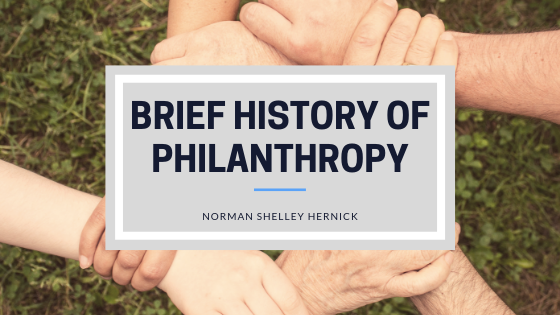Philanthropy—from the Greek word philanthropia, meaning a love of mankind—has existed for centuries. Where civilization goes, philanthropy and giving follows, as one of the best aspects of humanity is the kindness that is offered to strangers and neighbors alike. Throughout the course of history, philanthropy has ebbed and flowed in its meaning and identity. Continue reading to learn about the conception of philanthropy and how it has become what it is today.
Philanthropy in the Age of Discovery
For many centuries the world operated on rural feudalism. Under this structure, landowners and tenants—the peasants—operated under somewhat of a mutual understanding. The landowners provided housing and welfare for their tenants, and the tenants paid by serving the landowners. The world was changing, though. New lands were found and settled; people were becoming more connected as trade was cemented. Wars started, disease began to spread, and rural feudalism collapsed, leaving masses of citizens without work and roofs over their heads.
The world simultaneously seemed larger and smaller to people. Word traveled faster than ever before, and soon new religions sprang up introducing new philosophies. Ideas, culture, goods, and people were exchanged from country to country. For years the overarching religion had taken care of those who were in need. However, with the shift in religious ideologies came a shift in responsibility. Now, those who had gave and those in need received.
Philanthropy and the Industrial Revolution
The years between 1750 and 1890 brought masses of change to the world. The Napoleonic Wars and American Revolution claimed the lives of many, and in their wake were widows, orphans, and refugees. New nations were formed and cities grew in scale and population due to the Industrial Revolution.
The new cities were less than ideal, though. Housing was hard to come by, meaning masses of individuals packed into tiny tenements; the new factories puffed out thick clouds of smoke, sanitation was poor, and worker’s safety was questioned constantly. The changes brought on debates about people’s quality of life, and through the debates emerged a new kind of dual philanthropy. Private donors gave to organizations working towards bettering human life and the public began to ensure that they spoke up and out about human injustices.
The “Gospel of Wealth” and Modern Philanthropy
In 1889, Andrew Carnegie, a titan of industry during the period, published the “Gospel of Wealth,” an essay that urged the wealthy citizens of America to issue portions of their money for the betterment of society. With his influence, as well as the influence of his powerful friends, his message was not taken lightly. The foundation he laid has been vital to the global advancement of science, education, culture, and public health.
The Second World War only cemented philanthropists desire to give. More than ever before, the need for human and civil rights was at the forefront of the world’s attention. To make an impact, philanthropic organizations realized they needed to band together to be effective. Their collaboration took philanthropy from homegrown to professional, giving birth to the large organizations and nonprofits around today.
Modern philanthropy, though aided by the convenience of technology, hasn’t changed as much as you may think. At its heart, philanthropy is about seeing a human need and working to fill it. It is exactly what its Greek origins mean: a love for mankind.

